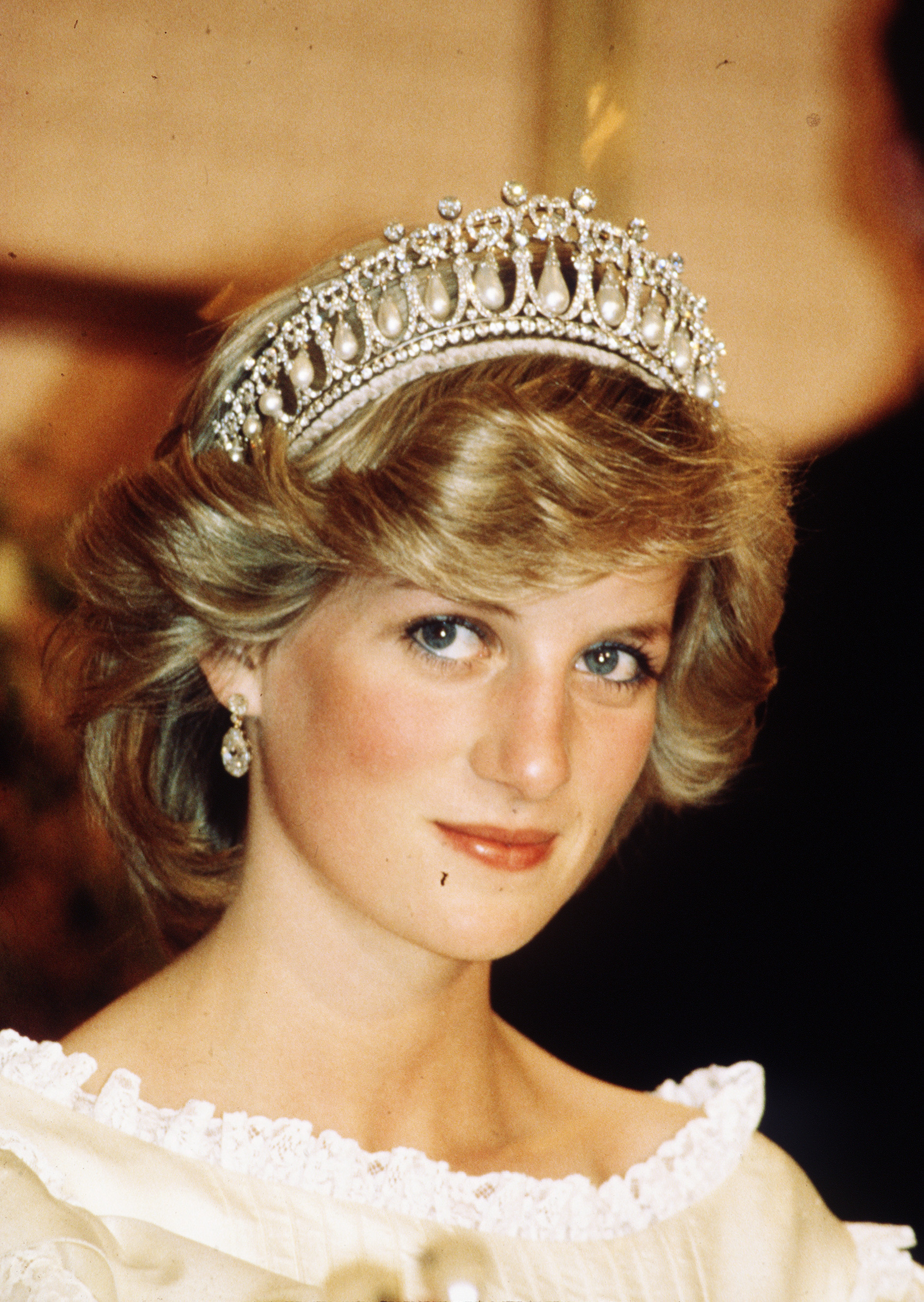Exploring The Enduring Legacy Of Diana Statues Around The World
The name Diana, it seems, holds a special place in many hearts, appearing in various forms across our digital lives, so. This widespread presence, in a way, often sparks a curiosity about the public memorials dedicated to figures bearing this name. Among these, the diana statues stand out, drawing attention from people across the globe. They are more than just stone or metal; they serve as powerful symbols of remembrance and lasting affection.
These beautiful sculptures, you know, capture the essence of a remarkable person whose life touched so many. They offer a quiet space for reflection, a chance to remember someone who meant a great deal to millions. Each one, in its own way, tells a story of impact and enduring public feeling.
We see these artistic creations as places where memories live on, where visitors can feel a connection to a figure who brought about significant change. It's truly amazing, basically, how these physical tributes keep a spirit alive for future generations to appreciate and learn from.
Table of Contents
- Introduction: The Enduring Appeal of Diana Statues
- Princess Diana: A Brief Life Story
- The Sunken Garden Statue at Kensington Palace
- The Althorp Memorial and Other Tributes
- Public Art and Collective Memory
- The Roman Goddess Diana: An Artistic Counterpart
- The Process of Creating Public Memorials
- Visiting These Special Places
- Frequently Asked Questions About Diana Statues
Princess Diana: A Brief Life Story
When we talk about diana statues, many people immediately think of Diana, Princess of Wales. Her life, though cut short, left a truly deep mark on the world. She was known for her kindness, her efforts to help others, and her ability to connect with people from all walks of life. Her story, you know, continues to inspire a great many.
She brought a fresh approach to the royal family, often reaching out to those in need in a very personal way. Her work with charities, especially those focused on AIDS awareness and landmines, brought global attention to important causes. She was, in fact, a person who used her position for good, making a real difference in the lives of many.
Her passing in 1997 shocked the world, and people felt a profound sense of loss. The desire to remember her, to keep her spirit alive, led to the creation of various memorials, including the notable statues we see today. These memorials, honestly, stand as a symbol of the lasting respect and love people felt for her.
Personal Details and Bio Data of Princess Diana
| Detail | Information |
|---|---|
| Full Name | Diana Frances Spencer |
| Born | July 1, 1961, Sandringham, Norfolk, England |
| Died | August 31, 1997, Paris, France |
| Notable Role | Princess of Wales |
| Children | Prince William, Prince Harry |
| Spouse | Charles, Prince of Wales (married 1981, divorced 1996) |
The Sunken Garden Statue at Kensington Palace
Perhaps the most talked about of the diana statues is the one unveiled at Kensington Palace's Sunken Garden. This garden, as a matter of fact, was a spot Princess Diana herself loved. The statue was revealed on what would have been her 60th birthday, on July 1, 2021, a rather significant date.
Princes William and Harry commissioned the work, and Ian Rank-Broadley created the bronze figure. The statue shows Diana with three children around her, which, you know, aims to represent her warmth and her work with young people. It's a portrayal meant to capture her caring nature and her global reach.
The choice of the Sunken Garden for its location was very deliberate. It's a place of calm and beauty, a spot where many visitors come to reflect. The design, with the children, tries to show her role as a humanitarian, a person who championed the less fortunate. This statue, in some respects, is a quiet tribute to her enduring impact.
The Althorp Memorial and Other Tributes
Beyond Kensington Palace, other significant diana statues and memorials exist. Althorp House, the Spencer family estate and Diana's childhood home, holds a very private and moving memorial. Her resting place is on an island in the middle of a lake there. It's a place of quiet contemplation, often visited by family members.
At Althorp, a classical temple stands across the water from her burial site. It features a simple silhouette of Diana, offering a peaceful space for personal reflection. This spot, basically, allows for a more intimate remembrance, away from the public eye.
Other tributes exist too, like the Diana Memorial Fountain in Hyde Park, London. This fountain, while not a traditional statue, is a very unique and interactive memorial. It encourages people to touch the water and engage with the space, symbolizing Diana's open and approachable spirit. It's a place, you know, for both quiet thought and lively interaction.
Public Art and Collective Memory
Public art, including diana statues, plays a rather important role in how we remember people and events. These sculptures become focal points for collective memory, places where communities can come together to honor a shared past. They help to keep stories alive for generations who may not have lived through those times.
When a statue is put up, it often sparks conversations about the person it represents, their life, and their contributions. It's a way, in some respects, for society to show its gratitude and to pass on values that were important to that individual. These pieces of art, quite simply, are teaching tools.
They also provide a physical space for people to express their feelings, to lay flowers, or just to sit and think. This tangible connection, honestly, can be very powerful for those who feel a bond with the person being remembered. Public art, you know, helps to solidify a legacy in a very visible way.
The Roman Goddess Diana: An Artistic Counterpart
While most modern discussions about diana statues point to Princess Diana, the name "Diana" also has deep roots in ancient mythology. Diana, the Roman goddess, was a powerful figure. She was the goddess of the hunt, the moon, and childbirth, a very strong and independent deity.
Statues of the goddess Diana have existed for thousands of years. These ancient sculptures often show her with a bow and arrow, sometimes accompanied by animals like deer or dogs. They represent strength, wildness, and a connection to nature. These works of art, you know, show a different kind of "Diana" but one that is equally compelling.
Comparing these ancient depictions to modern memorials offers an interesting look at how art captures different aspects of a name. The goddess Diana's statues speak to timeless themes of power and the natural world. They are, in a way, a historical echo of a name that continues to inspire artistic creation, even today.
The Process of Creating Public Memorials
Creating public diana statues or any major memorial is a long and involved process. It often starts with an idea, a desire to honor someone special. Then comes the planning, which can involve committees, public input, and a lot of discussion about the best way to represent the person. It's a truly collaborative effort, in fact.
Choosing an artist is a big step. Sculptors are selected based on their vision and their ability to capture the essence of the individual being remembered. The design phase can take a long time, with many sketches and models made before the final piece is approved. This part, you know, requires a lot of patience and artistic skill.
Then comes the actual making of the statue, which can involve working with materials like bronze, stone, or even different metals. This process is very detailed and requires specialized skills. The placement of the statue is also carefully considered, ensuring it fits well with its surroundings and can be easily visited by the public. It's a very big undertaking, basically, to get one of these made and put up.
Visiting These Special Places
For those interested in seeing diana statues in person, a visit can be a very moving experience. The statue at Kensington Palace is in a public garden, so it's quite accessible to visitors during opening hours. It offers a chance to see the artistry up close and to feel the quiet atmosphere of the place.
The Diana Memorial Fountain in Hyde Park is also very easy to visit. It's a popular spot for families, and its unique design invites people to interact with the water. It's a place, you know, that feels both respectful and full of life, just like Diana herself.
While the memorial at Althorp is more private, it sometimes opens to the public on specific dates. Checking their official website for visitor information is a good idea if you plan to go. Each location offers a different way to connect with the memory of Diana, providing a unique sense of her enduring spirit. You can learn more about visiting the Kensington Palace grounds on their official website, Historic Royal Palaces, for instance.
Frequently Asked Questions About Diana Statues
Where is the Princess Diana statue located?
The most well-known Princess Diana statue is in the Sunken Garden at Kensington Palace in London, England. This garden, as a matter of fact, was a favorite spot of hers.
Who designed the Princess Diana statue?
The statue at Kensington Palace was designed by the sculptor Ian Rank-Broadley. He created the bronze figure, which was unveiled in 2021, so.
What is the significance of the Diana, Princess of Wales statue?
The statue's significance lies in its role as a lasting memorial to Diana, Princess of Wales. It aims to capture her warmth, her humanitarian work, and her connection with children, reminding people of her enduring legacy and influence, you know.

A Timeline Of Princess Diana's Best Fashion And Beauty Looks

25 Beauty Secrets From Princess Diana - The Royal's Best Makeup and

Princess Diana's Iconic Crushed Purple Velvet Gown Is On Auction